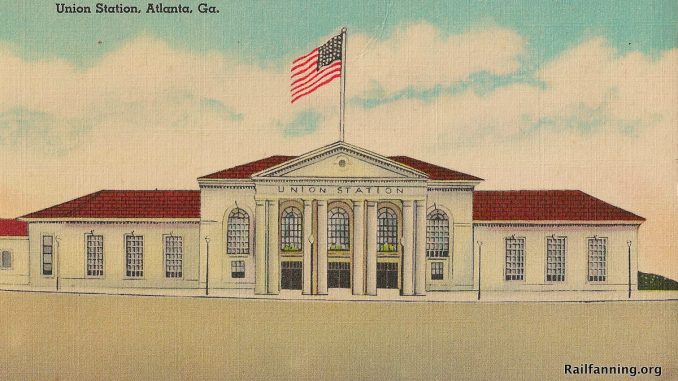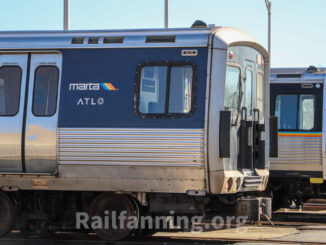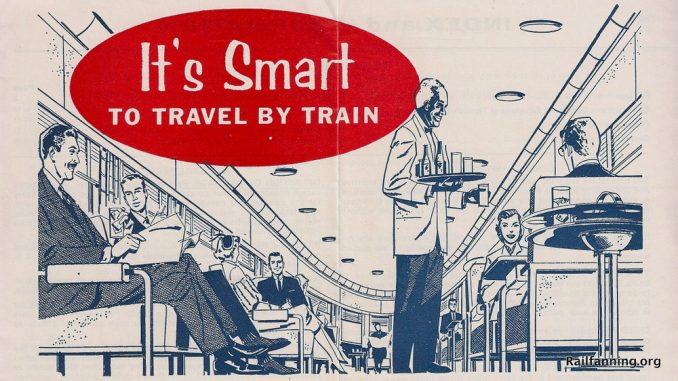
ATLANTA — The last Louisville & Nashville Railroad passenger train left Atlanta just as Amtrak was about to start operations.
The Nashville, Chattanooga & St. Louis and the Louisville & Nashville on Nov. 17, 1946, launched the Georgian, a diesel-powered passenger train with streamlined stainless steel coaches. American Car and Foundry Co. built the trainsets, which accommodated 288 passengers and 40 “extras.”
Mildred Delaney Slemons Arnall, wife of then Georgia Gov. Ellis Arnall, broke a bottle of champagne over the nose of the train to formally christen the train before its first departure from Atlanta. The ceremony included many dignitaries, including Atlanta Mayor William B. Hartsfield and Nashville, Chattanooga & St. Louis President W.S. Hackworth.
Initially, the train departed Atlanta at 9:30 a.m. and arrived in St. Louis at 9:22 p.m. The schedule that called for the train to complete the 612-mile trip in 12 hours and 52 minutes, good for an average speed of approximately 47.5 miles per hour.
In 1948, the railroad opted to run the train to Chicago and partnered with the Chicago & Eastern Illinois between Evansville, Ind., and Chicago. A section ran from Evansville to St. Louis. Less than a decade later, in 1957, the Louisville & Nashville assumed the lease of the Western & Atlantic when it absorbed the Nashville, Chattanooga & St. Louis Railway, and by 1958, the Georgian was an overnight train.
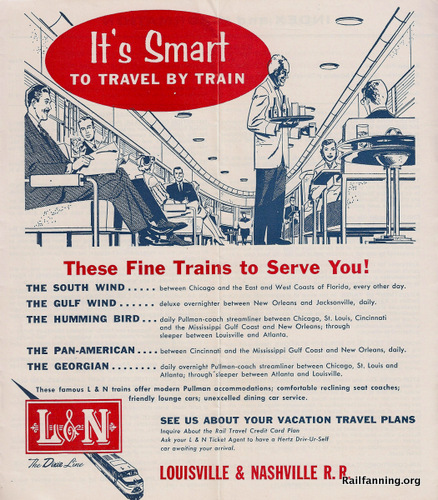
According to an Atlanta Terminal Company timetable from Oct. 27, 1963, the Louisville & Nashville operated three trains daily between Atlanta and Chicago and one train daily between Atlanta and Nashville.
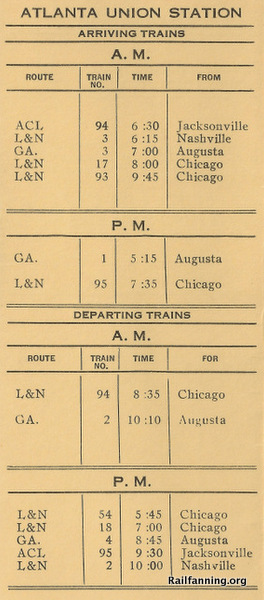
By 1967, the Louisville & Nashville timetable showed one section of the Georgian left Chicago daily at 3:45 p.m., while a second section left St. Louis daily at 4 p.m. The two sections joined in Nashville, Tenn., and the combined train left Music City daily at 2:55 a.m. and arrived in Atlanta at 10:55 a.m. A second train left Nashville daily at 8:30 p.m. and arrived in Atlanta at 6:15 a.m.
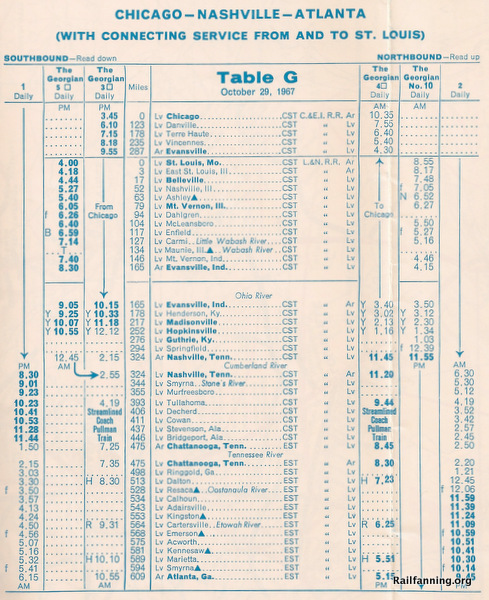
In 1968, the Georgian returned to its original Atlanta-to-St. Louis route. In July 1969, the railroad petitioned the Interstate Commerce Commission to drop its passenger train between St. Louis and Atlanta. However, in December 1969, the federal agency ordered the railroad must continue its twice-a-day-passenger service between St. Louis and Atlanta.
By April 1970, the railroad offered just one train in Atlanta, then identified only by number — the southbound No. 3 from Evansville, Ind., and its northbound counterpart, No. 4.
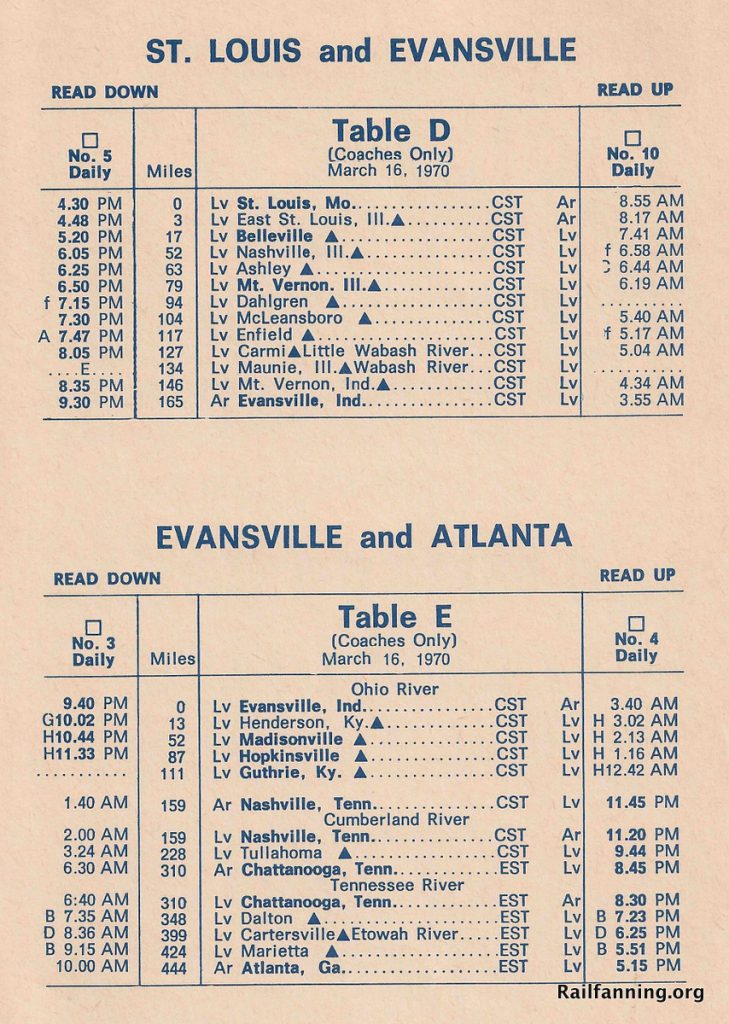
Roughly two years later, in April 1971, the Louisville & Nashville said it planned to drop three of its four remaining passenger trains, including the Georgian running between St. Louis and Atlanta via Nashville.
The train stopped running at the end of April 1971, just before Amtrak took over many passenger operations nationwide. Amtrak, which began operations on May 1, 1971, declined to keep the route.
